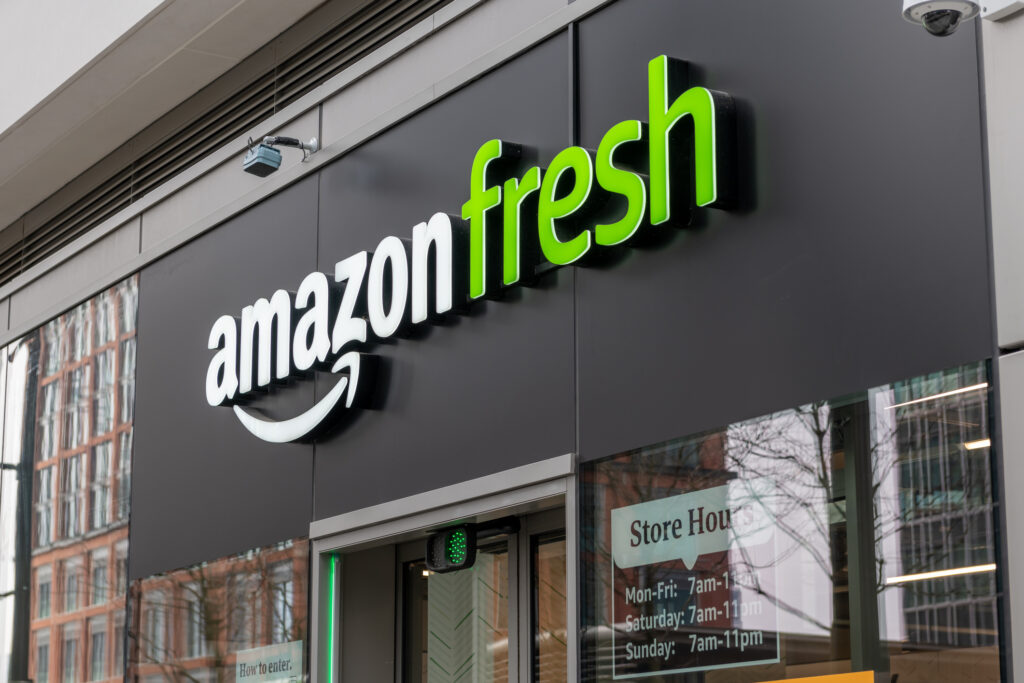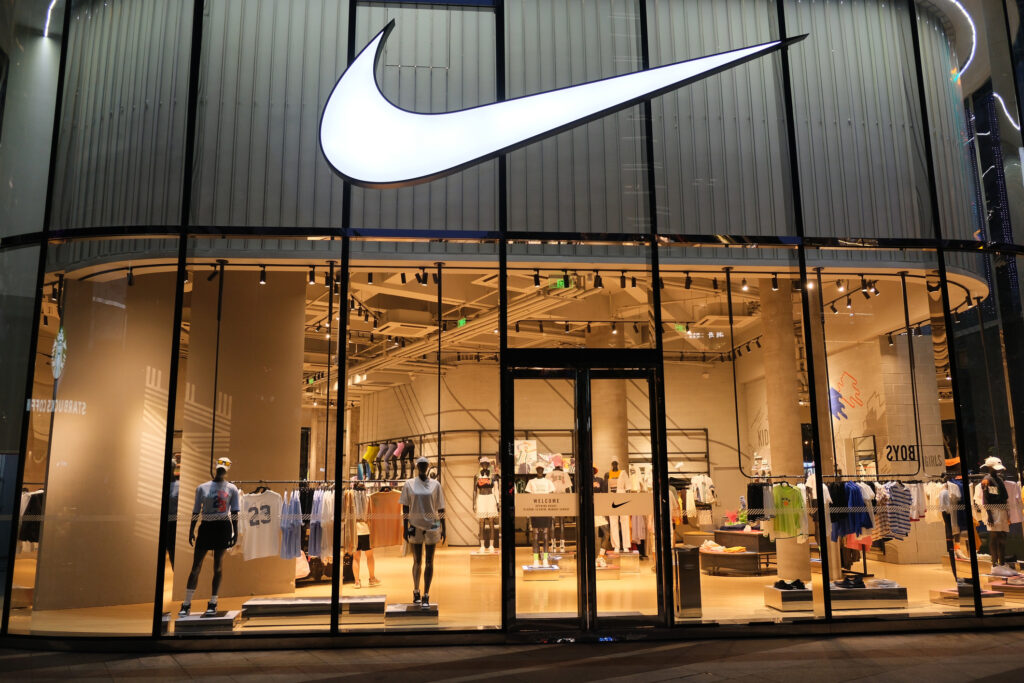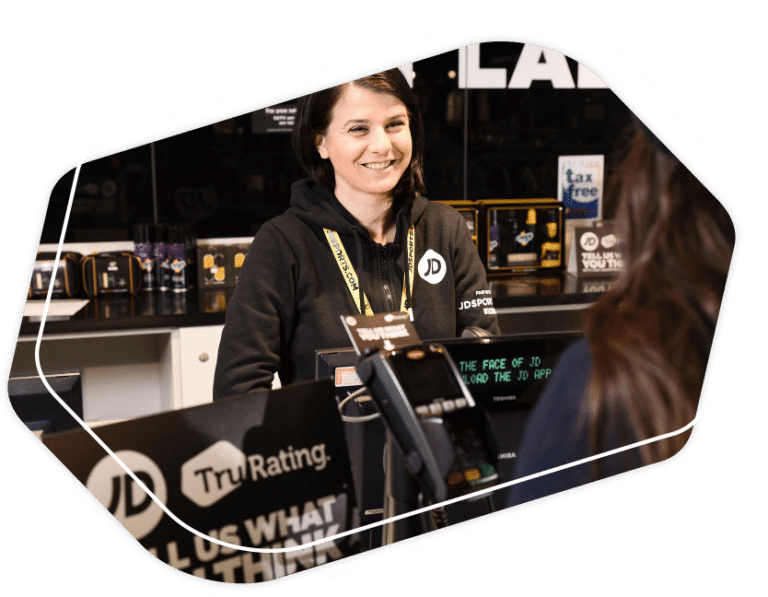
AI in retail has simply become a driver of change. Many retail teams are already using AI to influence everything from staffing plans to stock management. Whether you’re operating hundreds of outlets or launching a new store concept, AI can help increase traffic, raise basket sizes, and ensure a consistent experience across your network.
While AI in retail is accelerating, the latest McKinsey State of AI 2025 report highlights a major and often overlooked risk. AI inaccuracy is now the most commonly experienced negative consequence of AI deployment, with nearly one-third of organizations reporting issues driven by inaccurate model outputs. The research shows that 88% of companies now use AI, yet most are still stuck in experimentation or pilot phases, meaning their models are often trained on incomplete, inconsistent, or non-representative datasets. When this happens, AI doesn’t just produce noise, it can actively mislead decisions, misdiagnose store issues, and misallocate investment across operations, CX, staffing, and strategy.
From immersive store design to optimized inventory and proactive returns strategies, AI is rewriting the rules across all aspects of retail. With the right data foundation, retailers can trust the outputs, and act with confidence. With all these innovations, we explore how AI is impacting operations, customer experience, and strategic growth, backed by real-world examples from leading brands.
Impact of AI on the retail industry
The impact of AI on retail has been profound. According to Gary Drenik’s recent Forbes article, “How AI’s $243.7 billion boom is reshaping retail and beyond,” AI now influences 53% of U.S. purchase decisions, transforming everything from product discovery to digital advertising. As brands funnel investments into AI to meet rising consumer expectations around personalization, ethics, and convenience, retail has become ground zero for this technological revolution.
AI is reshaping key areas such as:
- Improving the supply chain via real-time tracking, predictive shipping, and smart reordering systems
- Increasing personalization through dynamic website experiences, tailored promotions, and targeted content
- Supporting better customer engagement through chatbots, AI-generated support tools, and omnichannel communication
- Enhancing operational forecasting, including staffing and stock planning based on predictive analytics
From small-format convenience stores to global department chains, retailers are using AI to detect experience breakdowns before they impact performance.
Benefits of AI in retail
The benefits of AI in retail go well beyond automation. AI is enabling:
1. Smarter inventory management
- Forecast demand more accurately.
- Reduce waste by adjusting orders in real time.
- Avoid stockouts by dynamically managing replenishment.
2. Higher basket size and conversion
- Use recommendation engines to suggest related products.
- Leverage customer data to personalize promotions.
3. Faster issue resolution
- Sentiment analysis identifies pain points before complaints arise.
- Natural language processing enables rapid support triage.
4. Enhanced execution monitoring:
- Compare location-level performance in real time.
- Validate whether new pilots or strategies are resonating.
Challenges of AI in retail
Despite its promise, AI adoption brings real challenges. Retailers must navigate:
1. Integration complexity
- Connecting AI tools to legacy systems is often resource-intensive.
- Data pipelines must be configured for real-time syncing.
2. Data limitations
- Poor-quality data can undermine model accuracy.
- Missing inputs can create gaps in forecasting and personalization.
3. Cultural resistance
- Store teams may not trust AI guidance.
- Without training, AI tools can be misunderstood or ignored.
4. ROI clarity
- Metrics must tie AI use directly to KPIs like ATV, conversion, or shrink.
Planning and cross-functional buy-in are essential to overcoming these hurdles.
AI in retail examples
AI is appearing in use cases across retail:
Amazon – cashier-less store innovation

Amazon’s Just Walk Out technology is one of the most widely recognized applications of AI in physical retail. These stores use computer vision, sensor fusion, and deep learning to allow customers to enter, pick up items, and leave, without checking out at a traditional register. AI tracks each shopper’s selections and charges their account automatically, eliminating the need for checkout lines. This innovation streamlines the shopping journey and offers a glimpse into how AI can remove friction while delivering a seamless, tech-enhanced experience.
Nike – experiential AI in flagship locations

Nike has experimented with AI-powered installations to elevate the in-store experience beyond products. At the House of Innovation in Paris, for example, Nike partnered with design firm Random Studio to create a wellness activation that guided visitors through a meditation journey. AI-powered thermal cameras tracked breathing rates, dynamically adjusting lighting from cool to warm tones to reflect the user’s state. This experience framed Nike not only as a performance brand but also as a wellness advocate, showcasing how AI can contribute to immersive and emotionally resonant brand spaces.
Glossier – personalization through generative AI
Glossier applied generative AI in a creative and sensory-rich way during its fragrance pop-up in Paris. Visitors who picked up a perfume bottle triggered a facial and body recognition system that passed their data to ChatGPT, which then generated a personalized poem inspired by their clothing, posture, and expression. This AI-driven interaction delivered a bespoke, shareable moment—positioning the brand at the intersection of tech and emotion. It demonstrated how AI can serve not just functional roles, but creative and expressive ones in retail storytelling.
AI in retail stores
In retail stores, AI is rapidly becoming a foundational tool for improving performance, consistency, and customer experience. The ability to monitor, assess, and respond to real-time data within stores is giving retailers unprecedented visibility and agility.
AI-driven systems allow for the analysis of foot traffic patterns, customer movement, and dwell time at specific displays. These insights help retailers redesign layouts for higher engagement and conversion. For example, AI can detect when customers frequently pause in front of certain products but don’t make a purchase, flagging potential issues in signage, pricing, or product availability.
Internet of Things (IoT) devices further enhance in-store intelligence by monitoring factors like temperature, lighting, and noise levels. This enables environment adjustments to improve comfort and support brand consistency, particularly important for premium or experiential formats.
Beyond diagnostics, AI is also enabling in-the-moment interventions. For example TruRating’s AI can:
- Detect declines in customer sentiment or service quality and trigger notifications to store managers, and trigger performance alerts for managers.
- Analyze customer feedback by daypart or associate shift, allowing for personalized coaching and recognition.
Retailers are increasingly integrating AI with their workforce tools to align staffing with peak times and deliver training modules based on customer feedback and behavior. Combined, these tools support a more consistent and proactive retail environment.
In short, the future of AI in retail stores is about equipping frontline teams with the insights and support they need to execute at their best every day.
AI in retail operations
AI in retail operations identifies execution gaps and enables timely action across an increasingly complex retail landscape. As expectations around speed, personalization, and consistency rise, AI is giving retailers the tools to manage store networks, field teams, and supply chains more efficiently than ever before.
At the heart of this shift is the ability to spot patterns early and act decisively. AI platforms ingest customer feedback, sales data, labor inputs, and environmental signals to detect shifts in performance before they impact key business metrics.
Some examples of AI retail operational excellence include:
1. Labor optimization
AI can forecast store-level footfall by analyzing historical data, weather patterns, promotional calendars, and even local events. This allows operations teams to schedule staff more accurately, minimizing overstaffing during quiet periods and ensuring adequate coverage when traffic peaks. The result is better labor efficiency, improved service availability, and enhanced customer satisfaction.
2. Stock management
AI tools monitor inventory movements across the retail network in real time, spotting patterns like unexpected depletion or product stagnation. When anomalies are detected, the system can recommend rapid reallocation or automated replenishment orders. This reduces the risk of stockouts or overstocks, helping retailers maintain product availability without tying up unnecessary capital.
3. Task automation
Instead of relying on manual inputs and static checklists, AI enables dynamic task generation based on real-time needs. For instance, if a store is trending below average on service sentiment, AI can automatically assign tasks like queue management reviews or team huddles. This reduces admin burden for store leaders and ensures actions align with performance priorities.
4. Performance benchmarking
AI can use historical and peer-based data to establish performance norms across stores, shifts, or regions. When a location deviates (positively or negatively) the system flags the change and identifies possible drivers. This helps field leaders replicate best practices from top performers and intervene early where support is needed, creating a more agile and consistent retail operation.
TruRating adds another layer by combining this operational intelligence with direct customer input. Its platform tracks customer sentiment alongside store performance metrics, using AI to trigger alerts when experience or service patterns deviate from the norm. When anomalies are detected, the system recommends targeted actions based on a retailer’s own playbook, ensuring the fix fits the context.
The result is a smarter, leaner operations function, one that can respond in real time, coach effectively, and scale high performance across locations.
AI in retail customer experience
Customer experience tools powered by AI are transforming how retailers understand and respond to shopper expectations in real time. As consumers increasingly expect personalized, seamless, and meaningful interactions, AI enables brands to deliver service models that are more proactive, consistent, and emotionally resonant.
AI enhances the retail customer experience in several key areas:
1. Hyper-personalization
AI enables retailers to tailor marketing messages, promotions, and product recommendations to individual customers based on past purchases, browsing history, and contextual behavior. Algorithms dynamically adjust the customer journey, across web, mobile, and in-store,to match each shopper’s preferences and intent.
2. Sentiment monitoring
Natural language processing tools can analyze open-text feedback from surveys, reviews, and social media to detect shifts in customer sentiment. Retailers can use this data to pinpoint emerging issues, like poor service or product shortages, before complaints escalate or loyalty is lost.
3. Predictive service recovery
AI-powered platforms anticipate when service breakdowns are likely to occur and alert store teams or support channels to take corrective action. For example, if a pattern of long checkout times emerges during peak hours, the system can recommend preemptive staffing changes.
4. Emotion-driven design and storytelling
Generative AI is also enabling new types of brand expression that appeal to customer emotion. Glossier’s AI-generated poetry and Nike’s AI-guided wellness experiences are examples of how customer experience can extend beyond utility to create moments of joy and connection.
As AI capabilities continue to evolve, expect to see more emotionally intelligent systems that respond not just to what customers do, but how they feel, and why that matters to their ongoing relationship with a brand.
AI retail operational excellence
AI’s most powerful impact in retail isn’t about futuristic concepts, it’s about solving everyday operational problems faster, smarter, and at scale. From frontline coaching to field execution, AI is quietly transforming the way retailers run their businesses with precision.
1. From data to decisions in hours, not weeks
TruRating’s AI doesn’t just automate analysis; it strengthens confidence in every decision by working from complete, representative data. Because feedback is captured from the majority of customers, not a fractional sample, the insights are statistically reliable and free from bias. That accuracy empowers retailers to act fast, coach effectively, and scale performance improvements that truly reflect what’s happening on the ground.
When poor product availability, slipping service standards, or rollout gaps arise, our system can now flag these issues within hours, then generate recommended next steps. With real-time signal detection and automated logic, we can help teams triage root causes and start fixing them immediately.
2. Feedback loops that actually loop
Getting feedback used to be slow and episodic. TruRating’s generative AI has redefined that loop. It processes thousands of free-text customer comments and automatically:
- Clusters them into key themes (e.g., long lines, checkout friction, missing stock)
- Summarizes sentiment by store, region, or shift
- Produces executive-ready reports aligned to key operational KPIs
The AI then goes further, suggesting new quantitative questions to measure the severity and commercial impact of those themes. So instead of teams scrambling to validate feedback, the platform does it for them.
3. AI coaching, tailored for every store
Our is helping store teams not just spot issues, but improve performance through targeted, real-time coaching. TruRating’s system continuously monitors customer and operational signals. When it detects a meaningful shift (like a decline in product availability or complaints about staff tone), it uses generative AI to:
- Diagnose the root cause
- Draft tailored coaching advice based on your brand’s own operational playbook
- Deliver insights to store managers through alerts, dashboards, or field systems
- This lets teams act before issues escalate, without relying on HQ for intervention.
4. Built for action, not just insight
Our approach is innovative not just for using AI, but for how it integrates AI into the way your business already works. It’s based on three foundational principles:
- Detect what matters
- Simplify the complex
- Drive next actions
It’s AI retail operational excellence, not just analysis.
If you’re looking to turn customer insights into operational excellence, learn more about our Retail Analytics Software. Book a demo today to see how TruRating can help your teams act smarter, move quicker, and stay ahead.












